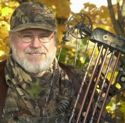It’s easy to understand why opossums are held in such low regard.
This slow-moving mammal with dingy fur has a tail like a rat. They sometimes become a nuisance in cities and suburbs, rummaging through garbage and taking up residence in the most inconvenient places — sheds, garages and crawl spaces. And when discovered or confronted, opossums may hiss, bare a mouth full of teeth, play dead and emit a foul odor.
But for all its shortcomings, the opossum is one of the most interesting creatures in Kentucky.
The opossum found in Kentucky, and throughout North America is the Virginia opossum (Didelphis virginiana).

It is the only marsupial found north of Mexico. The female carries and nurses her young in a pouch until they are two to three months old. After that, they ride on her back another one to two months whenever they are away from the den.
The breeding season for the Virginia opossum can begin as early as December and continue through October with most young born between February and June. A female opossum may have one to three litters per year. An average litter is eight or nine. Young are referred to as “joeys.”
Description and Distribution
In Kentucky, adults are about the size of a house cat, but throughout its range, size varies greatly.
Its fur is a mixture of white, gray and black hair of varying lengths. Its eyes are black with a white face, and the opossum has a pink nose, feet and long, hairless tail. On their rear feet are opposable, clawless thumbs, which move free and independent, in a rotary fashion, aiding in grasping branches when climbing.
Opossum comes from the Algonquian word “wapathemwa” which means “white animal.”
Solitary and nocturnal, the opossum is slow moving, often killed on roadways since it is not fast enough to flee oncoming traffic. Opossums are rather short-lived, typically two years in the wild, but they have a high reproductive rate.
When startled, the opossum may hiss or growl and show its teeth, a rather impressive mouthful of 50 long, sharp teeth, the most of any North American mammal.
But for the most part opossums are not aggressive, and prefer to left alone. If frightened, injured or feeling endangered, the opossum may fall into an involuntary shock-like state, and go limp, feigning death. Its heart rate drops by half, and breathing rate is slowed by about 30 percent. Hence the term, “playing ‘possum.”
For more outdoors news and information, see Art Lander’s Outdoors on KyForward.
This altered state normally stops when the threat withdraws, but it can last up to six hours.
The Virginia opossum is found throughout Central America and North America east of the Rocky Mountains from Costa Rica to southern Ontario, although absent from most of the Upper Midwest. The Virginia opossum was not originally found west of the Rockies. It was intentionally introduced into Washington, Oregon and California during the Great Depression, probably as a source of food.
Its ancestors evolved in South America, and over millions of years expanded their range northward.
The Virginia opossum is distantly related to Australia’s famous marsupial, the kangaroo.
Food Habits
The opossum is an omnivorous scavenger.
Its diet consists of insects, snails, small rodents, berries, over-ripe fruit, grasses, leaves, bird eggs, corn and other vegetables, and carrion. The Virginia opossum will occasionally eat small snakes, even venomous ones, as they are very resistant to snake venom. Persimmons are one of the opossum’s favorite foods during the autumn.
Opossums are very adaptable. That’s why they are so abundant and may become a nuisance in urban/suburban settings.
At home in the trees, the opossum uses its prehensile tail and “thumbed” rear feet to help stabilize itself when climbing. The Virginia opossum does not hibernate, although it may remain sheltered during cold spells.
In Kentucky, opossums may be hunted or trapped during the fall and winter furbearer seasons, with no daily bag limit.
For details visit www.fw.ky.gov. Click on the 2015-16 Hunting Seasons tab on the homepage.
Art Lander Jr. is outdoors editor for KyForward. He is a native Kentuckian, a graduate of Western Kentucky University and a life-long hunter, angler, gardener and nature enthusiast. He has worked as a newspaper columnist, magazine journalist and author and is a former staff writer for Kentucky Afield Magazine, editor of the annual Kentucky Hunting & Trapping Guide and Kentucky Spring Hunting Guide, and co-writer of the Kentucky Afield Outdoors newspaper column.






















